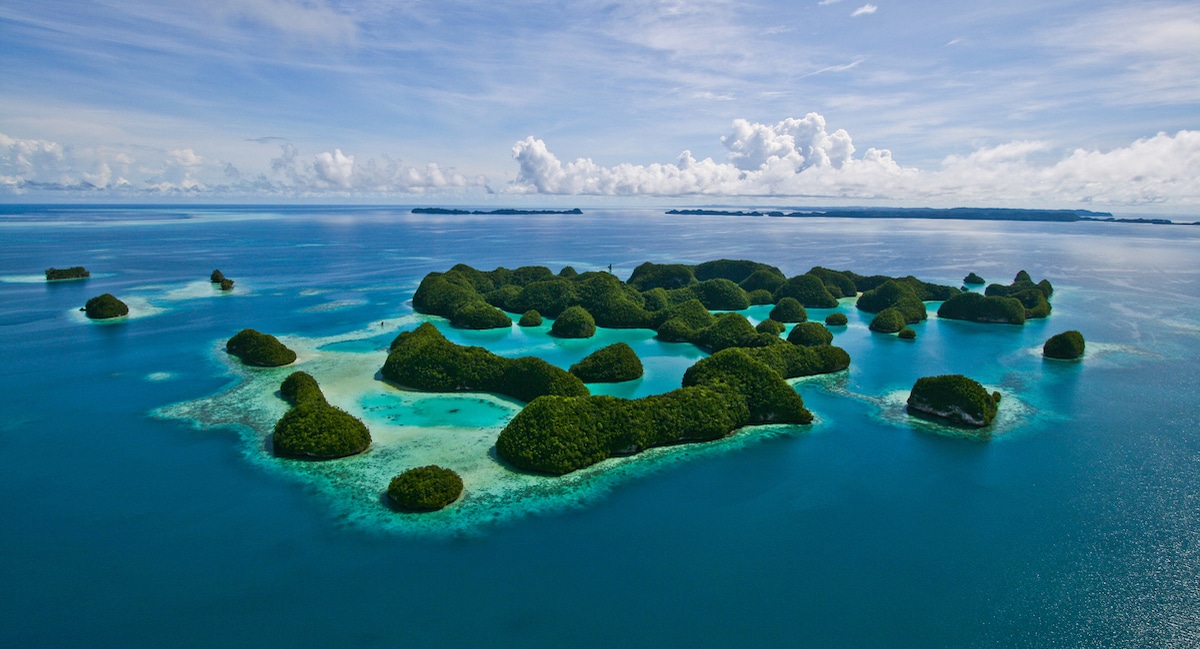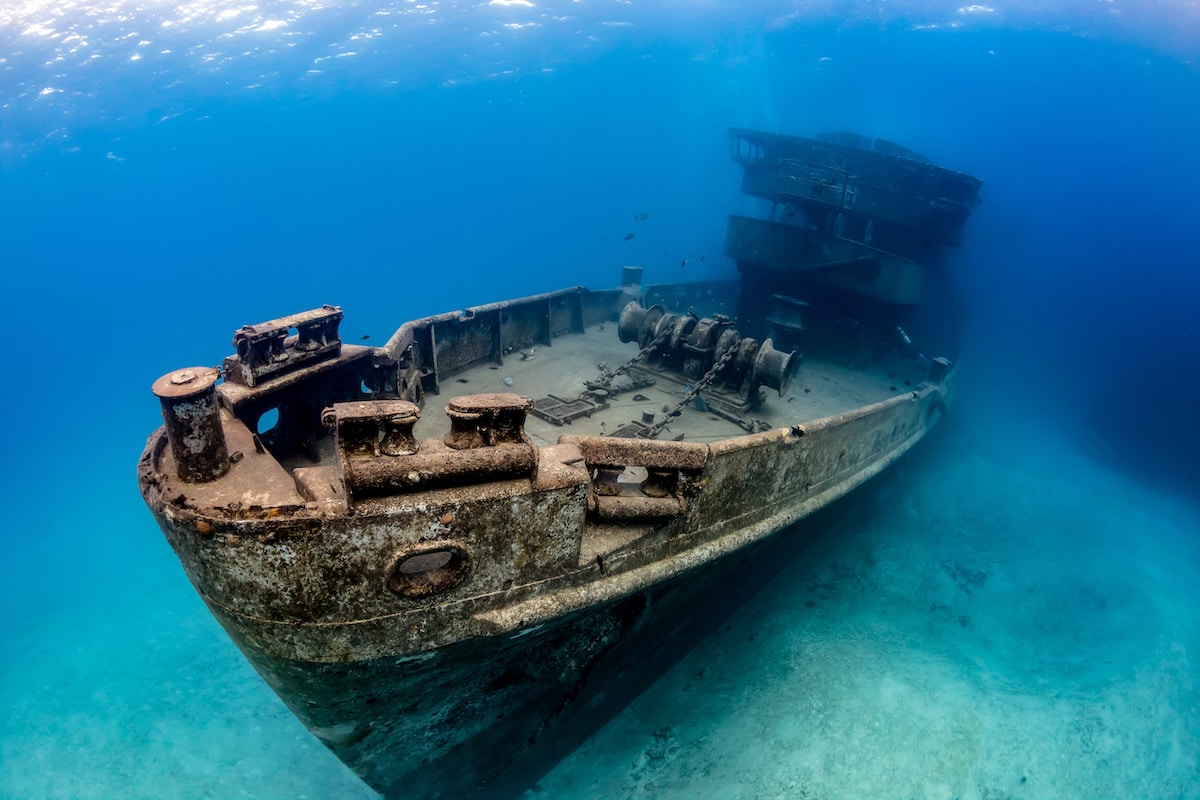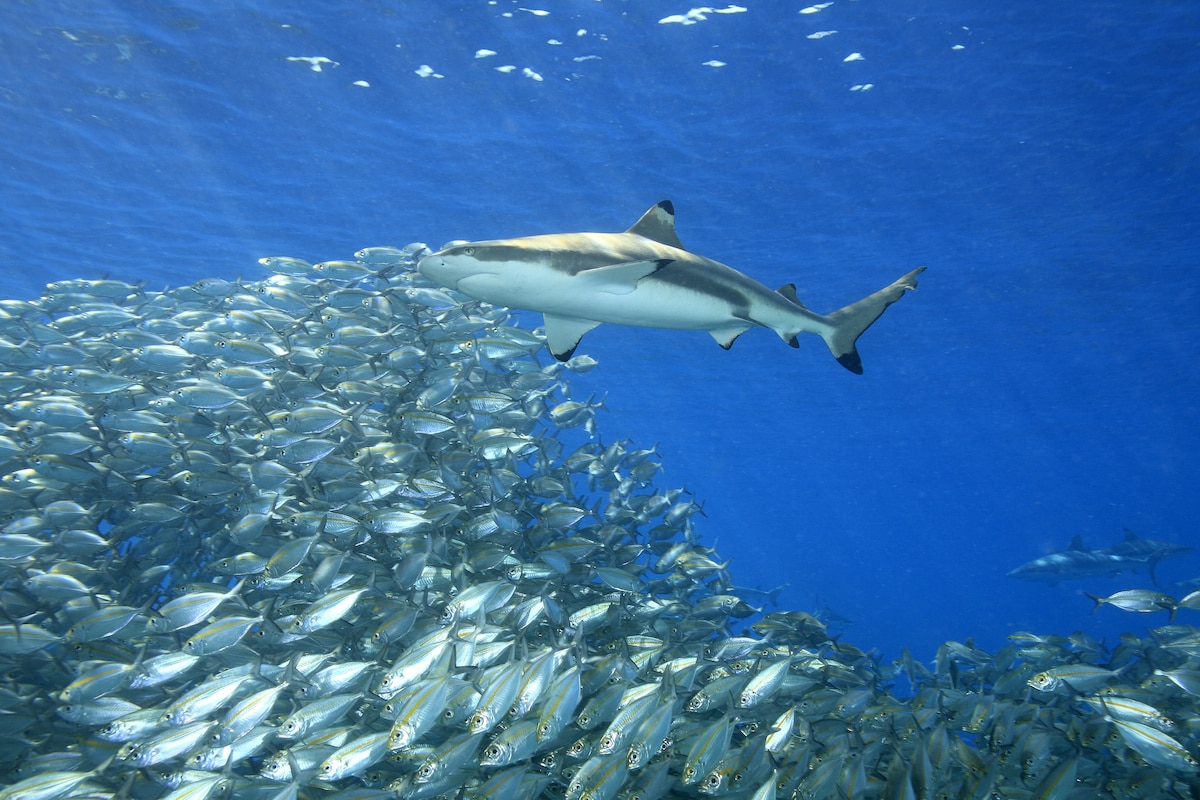News
Love Rust? Visit these 9 top Wreck Diving Destinations

Wreck diving is a fascinating way to experience history first hand, learn new dive skills and explore abundant marine life in concentrated areas. It offers unusual photographic opportunities of wreck structures covered in corals, plus the chance to navigate the inside of eerie wrecks and find their cargo.
Once thought to be for experienced divers only, there are wrecks suitable for new and advanced divers alike, plus deep wrecks for tech divers only.
No matter your wreck diving preference, there’s bound to be something for you.
Find out more in our guide to nine of the best wreck diving destinations…
Egypt’s Red Sea
A mecca for scuba divers, Egypt’s Red Sea offers colourful reef diving and a wealth of wrecks for all experience levels to enjoy. The SS Thistlegorm, Egypt’s most famous wreck, is a great place to start your Egypt diving adventure.
Sitting in the Northern Red Sea since 1941, this wreck is a huge 122 meters long and you can explore the interior and exterior with ease. Full of motorbikes, trucks, guns and other cargo, you’ll be kept well-entertained as you discover the Thistlegorm’s many highlights.
Abu Nuhas ‘the ships graveyard’ hosts five of the best Red Sea wrecks; the Giannis D, Chrisoula K, Kimon M, Rosalie Moller and the Carnatic.
The 1869 Carnatic is a must-do dive for wreck fans. She’s the oldest Red Sea shipwreck accessible to divers.
When to go: There’s no bad time to visit the Red Sea.
Liveaboard options: The Emperor Echo offers both Southern Wrecks safaris and Get Wrecked itineraries, allowing you to make the most of your wreck diving time in the north and south.
Truk Lagoon, Micronesia
If you’re looking to combine far-flung idyllic island vistas with wreck diving, Micronesia’s Truk Lagoon could be for you.
Truk Lagoon, an old Japanese naval base in WWII, was attacked in 1944 by the US in Operation Hailstone; which resulted in more than 60 ships and 200 airplanes sinking. The lagoon now has more than 48 wreck dive sites to dive and the waters are filled with historical artefacts.

Nature is slowly taking over at Truk Lagoon and the wrecks are covered in bright corals and surrounded by schools of groupers, barracuda, sea turtles and numerous reef fish. The diving is easy-going thanks to the calm lagoon waters and there are many wrecks at 18 to 40 meters, plus a good selection of wrecks at 40 to 60 meters for tech divers.
Don’t miss the San Francisco Maru or the Shinkoku Maru for night wreck diving.
When to go: All year
Liveaboard options: The Truk Master offers year-round Truk Lagoon safaris. The Thorfinn is ideal for tech divers, offering special tech-wreck diving packages.
Palau, Micronesia
Another popular choice for Micronesia diving, Palau offers the best of both worlds: excellent wreck diving and a variety of other dive sites. It’s ideal for divers who want to try wreck diving whilst also enjoying reef dives and pelagic action in the big blue.
Be sure to dive the Iro Maru if you can. This large freighter, sunk at Palau in 1944, sits proud in the water. She’s a great wreck dive for corals, critter hunting and enjoying a multitude of reef fish.
When to go: November to April has the most pelagics and the best water visibility.
Liveaboard options: The Ocean Hunter III is a good small Palau liveaboard that works with divers to develop custom itineraries whenever possible.
Cayman Islands
You’ll certainly be busy at the Cayman Islands with over 350 dive sites to explore and numerous islands to cruise. If your focus is on wreck diving, you won’t be disappointed with the wrecks on offer there.
The USS Kittiwake, an impressive US submarine rescue vessel, is one of the iconic Cayman Islands wrecks to dive.
She sits in crystal-clear waters and has spacious corridors for easy navigation. She also makes a great night dive.
Other good Cayman Islands wreck options include the Balboa and Ore Verde wrecks, which can also be dived at night.
When to go: All year, though May and June have the best dive conditions.
Liveaboard options: The Cayman Aggressor V offers safaris that include wreck diving.
Solomon Islands
Another top destination for history buffs, the unspoilt Solomon Islands are home to numerous WWII wrecks. Don’t miss Iron Bottom Sound. This well-known sound contains over 200 ships and 690 aircraft, all sunk during the battle of Guadalcanal during the 1940s. You can dive amongst Japanese and American military relics, including minesweepers, destroyers, submarines, planes and troop carriers. There are complex wrecks for experienced divers, plus easy-to-navigate options for those newer to wreck diving.
Covered in corals, the wrecks make great photographic subjects and are often visited by mantas, sharks and pelagic fish.
When to go: All year
Liveaboard options: The Solomons PNG Master is a popular choice and offers unique Solomons WWII Wreck Week safaris.
Great Barrier Reef, Australia
The Great Barrier Reef might not be an obvious choice for wreck diving but it has one of the world’s best-preserved wrecks to offer; the SS Yongala. Sitting just off the Queensland coast, in the centre of the GBR, this wreck is stunning. She sank in 1911 and is in great condition, protected by the Historic Shipwrecks Act, which prevents anyone from penetrating the wreck.
The interior is virtually untouched and the wreck is crowded with marine life including thriving corals and fish life. You can spot bull rays around the wreck and you might even see bull sharks. Just make sure you dive there multiple times; there is that much to see.
When to go: June to August offers the best water visibility.
Liveaboard options: The Spoilsport liveaboard offers limited Yongala expeditions, ranging from 2 to 4-night trips.
Coron, Philippines
Coron is well off the beaten path and is fast gaining a reputation as one of the best places in the world for wreck diving. There is a fleet of WWII Japanese supply shipwrecks to discover around Coron’s islands and the vessels range from small gun boats through to tenders and tankers. Many of the wrecks are still intact with equipment onboard, truly bringing history to life.
The Irako, an intact Japanese refrigeration ship, is considered one of the best Philippines wrecks and has resident groupers, turtles and rays. The Nanshin Maru is a good choice for new wreck divers, as she sits in shallower clear waters.
Other highlights include the intact crane on the Akitsushima and the striking Olympia Maru freighter. Whichever wreck you dive, be sure to search for the diverse and colourful macro life found there.
When to go: November to May.
Liveaboard options: The Flying Dolphin III small catamaran caters to just 8 guests and is a unique option for Coron wreck diving.
Bali, Indonesia
If you’re heading to Indonesia, make sure you take time to visit Bali and dive the USAT Liberty shipwreck. Sitting at a depth of 8 to 30 meters, she’s suitable for new divers to experience and is absolutely covered in corals. As well as corals, the wreck hosts abundant reef fish and garden eels. You can spot blacktip reef sharks cruising the wreck, plus schools of barracuda drifting by. Make sure you’re in the water early to avoid any dive crowds and enjoy the marine life all to yourself.
When to go: All year.
Liveaboard options: The Mermaid I offers Bali dive safaris that include the USAT Liberty.
Bikini Atoll, Marshall Islands
Bikini Atoll was made famous by US atomic bomb tests in the 1940s and 1950s, which included dropping a 15 megaton TNT hydrogen atomic bomb on a mock naval fleet in Bikini atoll. One thousand times more powerful than the bomb dropped on Hiroshima, it left a crater 2km wide and 74 meters deep; creating numerous wrecks. Now open for diving, Bikini Atoll has an abundance of tech-wreck dive sites lying below recreational dive limits and full of marine life. If you’re an experienced tech-wreck diver looking for an adventure, don’t miss it.
When to go: May to July
Liveaboard options: The Truk Master offers Bikini Atoll safaris from May to July each year.
This article was written by divers and writers at LiveAboard.com
Gear News
Introducing the TR-80, IR-50 and CS-30 Regulators from DYNAMICNORD

Whether you are a beginner or a professional diver – with the three new main regulators from DYNAMICNORD, everyone will find their favourite regulator. They all look super stylish.
Excellent performance with the TR-80
Quality and performance are the be-all and end-all for regulators. It is not for nothing that the TR stands for Tec Reg. The innovative design of the TR-80 guarantees absolute reliability – even in ice-cold waters.

Perfect breathing effort at 0.8 J/l / certified for diving in waters below 10 degrees / structural design made of solid brass for best cold protection / membrane-compensated design with dry seal of the first stage / reduced exhalation effort thanks to optimized exhalation membrane and bubble deflector / adjustable Venturi (dive/predive) and adjustment knob for individual inhalation comfort / innovative design of the front cover prevents free-flow in strong currents or when diving with scooters / design made of sandblasted brass, matt chrome finish / 2 HP and 4 LP outlets / mouthpiece made of high-quality, anti-allergic silicone for maximum comfort.


Amazing underwater adventures with the IR-50
The IR-50 is the top regulator for advanced and experienced divers. Natural breathing is the essence of this regulator.

Ideal breathing effort at 0.8 J/l /certified for diving in waters below 10 degrees / compensated membrane / adjustable venturi (dive/predive) and adjustment knob for individual inhalation comfort/ outlet valve and deflector for minimum exhalation effort and reduction of bubbles on the face / design made of sandblasted brass, matt chrome finish / 2 HP and 4 NP outlets / mouthpiece made of high-quality, anti-allergic silicone for maximum comfort.


The Workhorse – our CS-30
For diving centres and diving beginners – the workhorse stands for strong construction, reliability and robustness. Perfect for your training.

Optimal breathing effort at 0.8 J/l /recommended for diving in waters above 10 degrees / non-compensated piston / adjustable venturi (dive/predive) / outlet valve and deflector for minimum exhalation effort and reduction of bubbles on the face / design made of sandblasted brass, matt chrome finish / 1 HP and 3 NP outlets / mouthpiece made of high-quality, anti-allergic silicone for maximum comfort.


Octopus OP-30
The OP-30 is the ideal addition to all DYNAMICNORD regulators. It is identical in construction to the CS-30.

The TR-80, IR-50, CS-30 (DIN & INT) regulators and the Octopus OP-30 are available from DYNAMICNORD dealers and in the online store.
DYNAMICNORD – Your Outdoor Companion.
Marine Life & Conservation
Paul Watson Released as Denmark Blocks Japan’s Extradition Bid

Renowned anti-whaling activist Paul Watson has been released from custody in Greenland after spending five months in detention. Denmark’s Justice Ministry rejected Japan’s request for his extradition, citing insufficient guarantees that his time already served in custody would be credited against any potential sentence.
The 74-year-old Canadian-American was arrested on July 21 in Nuuk, Greenland’s capital, when his ship docked to refuel. His arrest was based on a 2012 Japanese warrant related to a 2010 encounter in Antarctic waters. Japan alleged Watson obstructed operations and caused damage to a whaling research ship during efforts to disrupt illegal whaling. Watson has consistently denied these claims, maintaining his commitment to marine conservation.
Denmark, which oversees extradition matters for Greenland, concluded that while the legal conditions for extradition were met, the lack of assurances from Japan regarding time-served credit made extradition untenable.
In a video shared by his foundation, Watson expressed gratitude and relief, saying, “After five months, it’s good to be out… and good to know they’re not sending me to Japan.” He added that the most difficult part of his time in custody was being separated from his two young sons.
Watson is a pioneering figure in marine conservation, known for founding the Captain Paul Watson Foundation in 2022 after decades of activism with the Sea Shepherd Conservation Society. His bold efforts to defend marine life have earned him widespread support, including from celebrities and conservationists. His work has also been featured in the acclaimed reality TV series Whale Wars.
Watson’s lawyer, Jonas Christoffersen, praised the decision, stating, “We are happy and relieved that Paul Watson is now free.” He added that Watson is eager to reunite with his family and continue his vital work.
The arrest occurred while Watson’s vessel, the M/Y John Paul DeJoria, was en route to the North Pacific with a team of 26 volunteers to intercept a Japanese whaling ship. His foundation described the arrest as politically motivated and emphasized that Watson’s actions were focused on ending illegal whaling practices.
Japan resumed commercial whaling in 2019 after leaving the International Whaling Commission, asserting that whale meat is a cultural tradition. Conservationists, however, continue to challenge these practices, highlighting their impact on marine ecosystems.
Despite the challenges, Watson remains steadfast in his mission to protect marine life and bring attention to whaling practices. His dedication to ocean conservation has made him a globally respected advocate for the environment.
-

 News2 months ago
News2 months agoIconic SS United States to become the World’s Largest Artificial Reef
-

 News3 months ago
News3 months agoBook Review – 52 Assignments: Underwater Photography
-

 Gear News3 months ago
Gear News3 months agoDYNAMICNORD – New German diving brand enters the British market
-

 News3 months ago
News3 months agoExploring Cenote El Pit: A Diver’s Dream
-

 Gear News3 months ago
Gear News3 months agoTry BARE drysuits (and maybe even win one!) this Friday with Sea & Sea at North West Dive Fest
-

 Marine Life & Conservation3 months ago
Marine Life & Conservation3 months agoBook Review: Coral Triangle Cameos
-

 Blogs2 months ago
Blogs2 months agoDive the Egyptian Red Sea this Autumn with Regaldive
-

 News3 months ago
News3 months ago2024 Ocean Art Underwater Photo Competition Announced



















